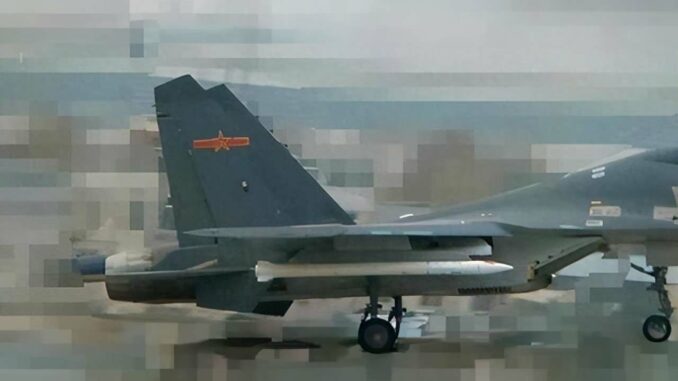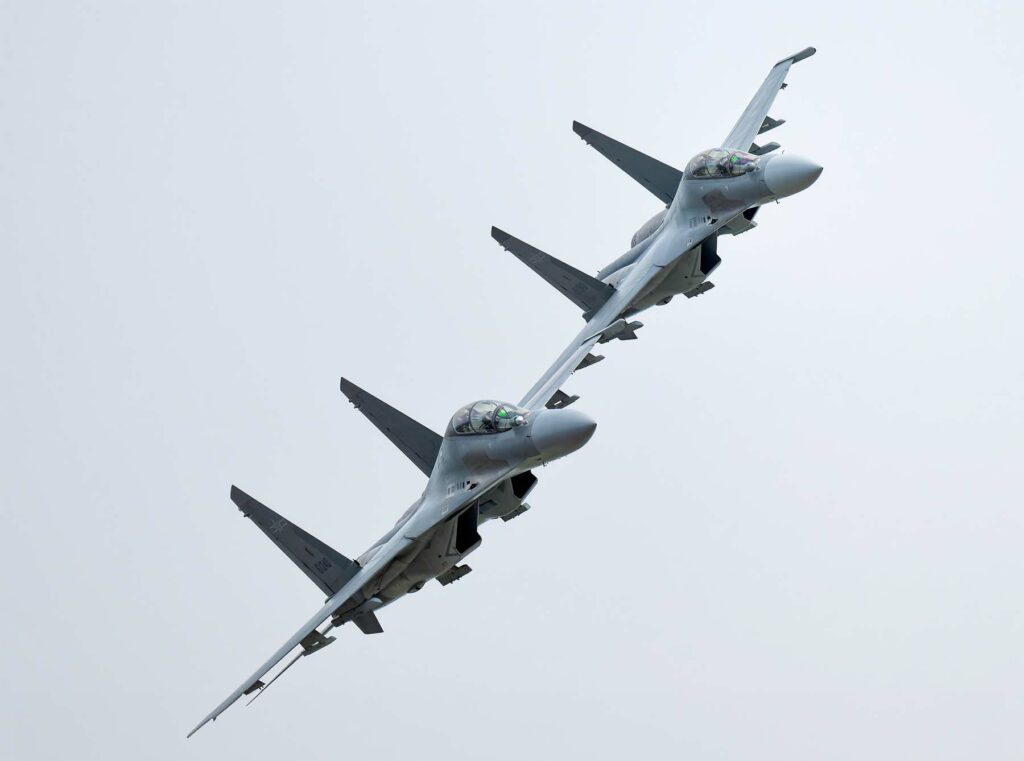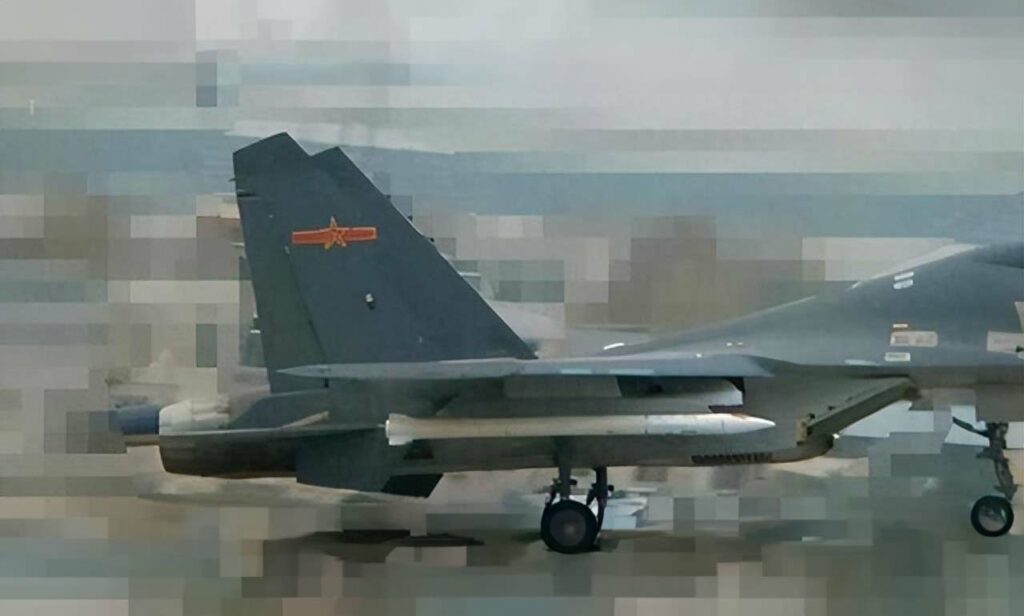
China reveals its PL-17 air-to-air missile on a J-16 fighter jet, a major strategic development for air supremacy.
China recently revealed its longest-range air-to-air missile (AAM), the PL-17, mounted on a J-16 fighter jet. This announcement puts an end to speculation about the missile’s existence and characteristics, which has been rife for some years. With an estimated range of 400 kilometers, the PL-17 is positioned as one of the world’s most capable AAMs, far surpassing those in the US inventory, if Chinese claims are to be believed. This development is significant in the context of rising tensions between Beijing and Washington, notably in the South China Sea and around Taiwan, and has a notable impact on the race for air superiority between the two nations.

Characteristics and implications of the PL-17 missile
The PL-17, longer than its predecessor the PL-15 with a range of around 300 kilometers, marks a significant advance in Chinese air-to-air missile technology. The photo released, taken from official military publicity material, shows four J-16s equipped with a full arsenal of AAMs, of which the PL-17 is a key component. The PL-17’s capabilities, notably its impressive 400 km range, give it a considerable tactical advantage, in line with China’s anti-access and area denial (A2/AD) doctrine.
The PL-17’s armament on PLAAF and PLAN aircraft raises questions as to its induction stage, between limited series production for further development and full induction after all the necessary tests. Reports from China indicate that the missile was put into service in November 2022, although the propaganda motivations behind the release of the image cannot be denied.
Geopolitical context and the race for air superiority
The emergence of the PL-17 takes place in a tense geopolitical context, marked by increased competition for air superiority between China and the United States. In unveiling the PL-17, China is responding to the need to assert its military presence in strategic regions such as the South China Sea and Taiwan. This development is also a response to the evolution of US air capabilities, notably with the AIM-260 project under development by Lockheed Martin, aimed at countering the growing threat of Chinese AAMs such as the PL-15 and now the PL-17.

Strategic implications of the PL-17 for China and beyond
The introduction of the PL-17 into China’s arsenal has significant implications for global air strategy. The PL-17’s extended range enables it to target vulnerable support assets, such as enemy tankers and airborne detection and command aircraft, thus weakening the adversary’s combat capability. This also raises questions about the balance of power in the Asia-Pacific region, and could trigger a new arms race, particularly in the field of long-range air-to-air missile technologies.
It is essential to note the importance of coordination with airborne detection and command (AEW) aircraft in guiding missiles like the PL-17, especially at such distances. The PL-17’s design probably includes a two-way broadband data link, enhancing its ability to strike accurately at long range.
China’s unveiling of the PL-17 missile represents a giant step forward in the competition for air superiority in the Asia-Pacific region. With its exceptional range and advanced capabilities, the PL-17 not only strengthens China’s air arsenal; it also redefines the global air security landscape, posing new strategic challenges for the United States and its allies.
War Wings Daily is an independant magazine.